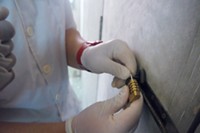Advertisement
Grab your lab coat. Let's get started
Welcome!
Welcome!
Create an account below to get 6 C&EN articles per month, receive newsletters and more - all free.
It seems this is your first time logging in online. Please enter the following information to continue.
As an ACS member you automatically get access to this site. All we need is few more details to create your reading experience.
Not you? Sign in with a different account.
Not you? Sign in with a different account.
ERROR 1
ERROR 1
ERROR 2
ERROR 2
ERROR 2
ERROR 2
ERROR 2
Password and Confirm password must match.
If you have an ACS member number, please enter it here so we can link this account to your membership. (optional)
ERROR 2
ACS values your privacy. By submitting your information, you are gaining access to C&EN and subscribing to our weekly newsletter. We use the information you provide to make your reading experience better, and we will never sell your data to third party members.
Education
Newscripts
Hormone-field advantage, Nearly spherical common salt crystals, High school chemistry project was a blast
by Stephen K. Ritter
July 17, 2006
| A version of this story appeared in
Volume 84, Issue 29
Hormone-field advantage
Home-team advantage is a well-known phenomenon in sports in which the home team tends to win more often than lose. It's assumed this statistically significant advantage arises from the visiting team being in unfamiliar surroundings or being tired from travel. A study from clinical psychologists at Brock University, St. Catharines, Ontario, begs to differ, believing that testosterone is the key, even for women. Graduate student Justin Carr?? presented the results at the International Congress of Neuroendocrinology, held in Pittsburgh in late June.
The researchers measured testosterone and cortisol levels of the women of an ice hockey team before and after games over the course of one season. Wins were associated with higher than normal testosterone levels both before and after games, but pregame levels were even higher before home games, suggesting that a hormone surge comes from "defending one's territory." Levels of cortisol, a hormone associated with stress, also were higher for home games than away games, suggesting that pressure to perform is greater at home. It's good to know people still have their animal instincts.
Nearly spherical common salt crystals
Researchers in India have developed a swell method for preventing table salt from clumping together under humid conditions: Isolate the salt from brine as nearly spherical crystals rather than the usual cubic crystals (Cryst. Growth Des. 2006, 6, 1591). Most people just toss a few grains of rice in the shaker to absorb moisture or keep the shaker out of the range of steam from the stovetop. But read on.
Besides being an essential nutrient, salt is a raw material used to make a variety of bulk chemicals, such as sodium bicarbonate, sodium hydroxide, and chlorine. Salt also is used in processing textiles, dairy products, paper, and much more.
One problem is that salt is hygroscopic, and even small amounts of moisture cause salt crystals to glom on to one another. This caking is thought to occur because the square sides of the cubic salt crystals become glued together by the moisture. Caking, which reduces the free-flowing properties of bulk salt, is a problem for large-scale storage and handling, not to mention the cause of occasional fits with a saltshaker.
Parthasarathi Dastidar and Pushpito K. Ghosh of the Central Salt & Marine Chemicals Research Institute and their colleagues used a crystallization technique known as habit modification in which they added a small amount of the amino acid glycine to salt brine. The glycine is thought to impart a slight hydrophobicity to the growing crystals and propel one set of the crystal faces to grow faster than the others, thereby forming nearly spherical rhombic dodecahedral crystals rather than cubic octahedral crystals. The end result is that the crystal faces aren't as large, so the crystals don't readily stick together when moisture is present
The crystallization method has been patented, and the researchers are working with Unilever on potential applications. If it doesn't work out, at least we have round salt crystals to go through the round holes in the tops of saltshakers.
High school chemistry project was a blast
According to a report in the Detroit News last month, a 17-year-old high school junior in Walled Lake, Mich., found a recipe for making trinitrotoluene (TNT) on the Internet and decided to try it out for the final experiment in his advanced placement chemistry course. He planned to test his product by blowing up a watermelon for his classmates on the school's football field.
The student used chemicals from the school stockroom and had responsibly informed his parents and teacher about his TNT project, which apparently was progressing just fine. But precaution took over, and the teacher and school officials alerted the sheriff's office. It wasn't long before the state police bomb squad was on the scene, removing three beakers containing what was described as a brown-black paste. Police aren't sure if the material was TNT or not, but they reported its detonation made a "sizable explosion."
It's still unclear if any legal charges or other sanctions will be brought against the youth or the teacher, but it seems today's sanitized school environment can still be exciting.









Join the conversation
Contact the reporter
Submit a Letter to the Editor for publication
Engage with us on Twitter